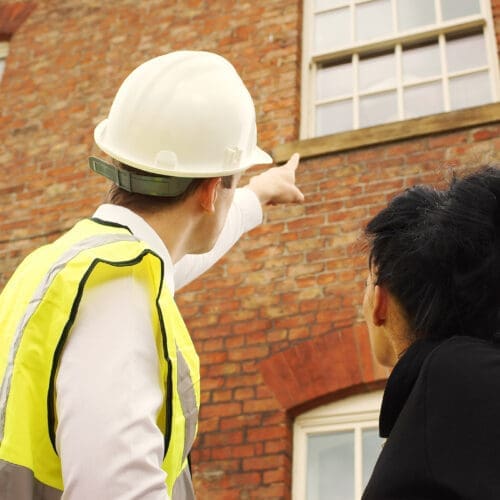Part one – An update on the Gateways process: is this time for change?
September 2025The Gateway processes for higher-risk buildings in England have recently received a significant amount of media and industry attention. In this article, we delve into the Gateways and the recently announced changes to them (as well as new guidance released to assist those engaging in the process), and provide practical tips to help parties protect themselves against delays and cost overruns.
Background
In October 2023, the Building Safety Regulator (BSR) – established within the Health and Safety Executive (HSE) following the Building Safety Act 2022 coming into force – became the Building Control Authority for all higher-risk buildings (HRBs) in England.
HRBs are buildings that have at least:
- Seven storeys or are at least 18 metres high; and/or
- Two residential units or are a hospital or a care home.
The Government, in its formal response to the Grenfell Tower Inquiry Phase 2 report, confirmed that it will be reviewing the HRB definition. Detail was originally due to be published in Summer 2025, although at the time of writing, this clarification is still awaited. Given the criticisms levied by the Inquiry that the HRB definition was only by reference to a building’s height, it seems likely that amendments will be made, potentially placing greater emphasis on factors such as the use / complexity of a building.
As it stands, the criteria set out above for a HRB remains in force. Assuming this is met, developers are required to apply to the BSR for building control approval. Such approval is a prerequisite before construction works commence, and is given via the Gateway processes. BSR approval is required regardless of whether it concerns works to an existing HRB, or for the design and construction of a new HRB. BSR approval is also required for building work to an existing building that either makes it become a HRB, or stops it being a HRB.
If a site has both HRBs and non-HRBs, the BSR will normally be the building control authority for the HRB aspect only, with the local authority or a registered building control approver being responsible for the non-HRB aspects.
BSR Gateways
The BSR application process consists of three Gateways, each of which act as ‘hard stop’ checkpoints: work cannot proceed unless and until the BSR has given its approval at each stage. We have previously written about the Gateways in more detail but, by way of brief summary:
- Gateway 1 – Planning – Applicants are required to submit a fire statement, demonstrating how fire safety has been integrated into the project’s design. If satisfied, the BSR will grant permission to proceed to Gateway 2.
- Gateway 2 – Building Control Approval – Full comprehensive design and safety details must be submitted to the BSR for approval. Building work can only proceed once the BSR is satisfied that the applicant has demonstrated how compliance with the functional requirements of the Building Regulations will be achieved. To meet this standard, applicants have to provide (among other things) a comprehensive outline of the work to be carried out, information about the HRB itself, and the people involved, as well as a change control plan to show how any proposed changes will be considered.
- Gateway 3 – Completion – Once the building work is complete, the BSR reviews the final building and safety documentation to confirm that what was built reflects the approved plans (i.e. at Gateway 2), and that the requirements of the Building Regulations have been met. If satisfied, a completion certificate is issued. This takes place before occupation occurs for new HRBs.
It is principally at Gateway 2 where issues are occurring. Before touching on those issues, it is worth reiterating the processes and timeframes involved at Gateway 2, to provide the appropriate context:
- Upon receipt of an application, the BSR validates the application, which involves checking that the necessary supporting documents have been provided.
- Once the application has been validated, the BSR assembles a Multi-Disciplinary Team (the MDT) to work with the BSR – the MDT assesses the application to ensure compliance with the Building Regulations, following which there is a determination period of 12 weeks for new build HRBs and eight weeks for works to existing HRBs, albeit the BSR is able to agree extensions to these timescales.
Unfortunately, the reality is that those timeframes are simply not being met: the BSR has publicly confirmed that the time taken to approve Gateway 2 applications is in fact c.16-c.18 weeks. To round out the picture, the statistics released by the BSR also indicate that:
- 187 Gateway 2 applications for new HRBs have been submitted – of these, 20, i.e. 10.7%, have been approved, 18 have been rejected, and 2.14% have not been validated. The average cost of an approved new HRB application is £27,668 with the BSR spending an average of c.81 hours reviewing each application.
- 2,049 Gateway 2 applications for works to existing HRBs have been submitted – of these, 393, i.e. 19.2%, have been approved, 191 have been rejected, and 3.71% have not been validated. The average cost is £6,001 with the BSR spending an average of c.27 hours reviewing each application.
- Seven Gateway 3 applications for new build HRBs have been submitted, none of which have been approved or rejected to date, albeit 14% have not been validated.
- 80 Gateway 3 application for works to existing HRBs have been submitted – of these, 15, i.e. 18.8%, have been approved, none have been rejected, and 26% have not been validated. The average cost is £2,674 with the BSR spending an average of c.14 hours reviewing each application.
Time for change?
Since the BSR’s introduction, there have been widespread concerns about the well-publicised delays it has caused (primarily by Gateways 2 and 3), and the impact it’s having on project timelines, costs and the ability to meet contractual obligations. The statistics released simply confirm those concerns.
To illustrate further, the Gateway 2 target determination period is 12 weeks. While the BSR’s 16–18-week range mentioned above is supported by statistics, it is likely skewed by smaller projects being approved. We are aware of larger developments where Gateway 2 is taking 30-40 weeks, which is 2.5 – 3 times longer than the target period. We are also aware of situations where the BSR, having taken considerably longer than 12 weeks, has provided hundreds of detailed negative comments on applications, with applicants only being given a few days to respond and substantiate.
It is more than just delays, however. As mentioned by attendees at our recent Architects’ Roundtable, the lack of guidance and communication from the BSR (and the inconsistency when working across regions), are causing real frustration and concern across the construction industry.
The industry accepts some applications are rightly being rejected as poor quality, and that should be the case – for example, if basic information is missing, or the applicant cannot demonstrate how they will comply with Building Regulations. If such applications got through, it would undermine not only the BSR as an entity, but the progress made by the industry over the past few years. But that does not necessarily explain the significant delays from the BSR – if there are poor quality applications, they should be able to be rejected quickly, leaving the BSR/MDT to focus on others.
These issues have prompted the House of Lords Industry and Regulators Committee to launch an inquiry into building safety regulation. The inquiry focuses on the ‘[c]oncerns [that] have been raised by some in the housing sector that delays in approvals by the BSR have slowed down the delivery of new buildings and homes’. Its objective is to examine the causes of these delays, assess the impact on project progress, and explore potential solutions to improve the BSR application process while maintaining the required safety standards.
The Committee called for evidence by the end of August 2025 and will hold public evidence sessions by the end of September 2025, with the aim of publishing its report to the House of Lords in the autumn.
The Government has also recently announced reforms to the BSR to accelerate housebuilding, including:
- A new fast track process ‘to enhance the review of newbuild applications, unblock delays and boost sector confidence’, with a view to supporting the Government’s commitment to building 1.5m homes as part of its ‘Plan for Change’; and
- Moving the BSR from the HSE to become an arms’ length body associated with the MHCLG, as part of initial steps towards a single construction regulator (a step which the Government announced in its formal response to the Grenfell Tower Inquiry Phase 2 report, which we reported on here). As part of this, leadership of the BSR is now in the hands of two former senior figures from the London Fire Brigade: Andy Roe, its former Commissioner, who has become non-executive chair, and Charlie Pugsley, its former Deputy Commissioner, who is taking on the role of Chief Executive Officer to run the organisation day to day. It is also understood the BSR intends to hire more than 100 new staff to boost capacity and improve review timelines, including new inspectors.
The extent to which these changes make a material difference remains to be seen. However, Dame Judith Hackitt, the author of ‘Building a Safer Future’ and Chair of the Building Control Independent Panel, has publicly expressed fears that the industry may go backwards. In that vein, it must be noted that the new process does not reduce the amount of rigour and detail that should go into a Gateway 2 application, and applicants must be aware of that.
However, perhaps the biggest positive change is the Construction Leadership Council’s new ‘Building Control Approval Application for a new Higher-Risk Building (Gateway 2)’ guidance suite. While by its very title this concerns new HRBs only, many of the principles and guidance set out will be applicable to existing HRBs.
Included in the guidance (which was prepared with the input of the BSR) are baseline principles to guide those involved in submitting and assessing applications at Gateway 2, for example:
- How applicants should approach the (sufficient) level of design required;
- How to approach the use of an Approval with Requirements application where the BSR has seen sufficient design to evidence compliance with Building Regulations, although certain aspects of the design remain outstanding and will be submitted later in accordance with an agreed plan;
- Details of what can/should be provided in an application information schedule (and the format, folder structures, and naming conventions of same), to help guide the BSR through the documents and demonstrate compliance with Building Regulations.
- The level of detail that should be included in the application project brief, including the description of work, project team, description of the development, and key information about the HRB.
The guidance also hyperlinks to other informative documents and templates. This is a welcome development for all concerned with HRBs, and the BSR’s involvement in the process is a positive sign as well.
Comment
It is undeniable that the BSR and Gateway approvals process need to improve. The recent announcements from the Government are a tacit admission of that. The CLC’s guidance suite will be welcomed by the industry – whether, and to what extent, it will result in real change in practice at the BSR remains to be seen.
In part two of this series, we will discuss the contractual implications of the risks associated with the BSR and Gateways approvals process.
For any queries or support regarding the points raised in this update and how these may directly impact your projects or contracts, please contact the authors, or your usual Beale & Co contact.
Download PDF









